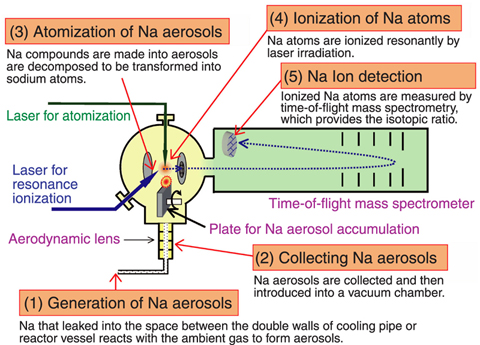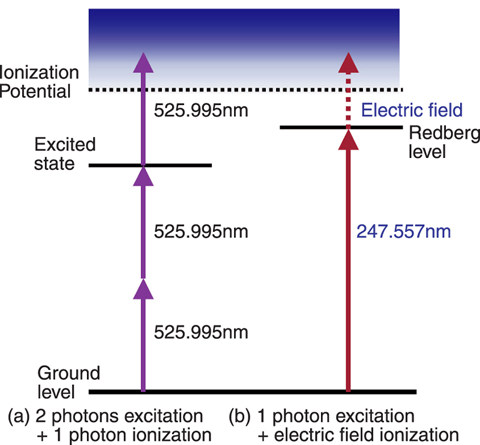
Fig.14-15 Conceptual Diagram of Fast Reactor Sodium Leak Detection System Using RIMS

Fig.14-16 Resonance Ionization Scheme of Sodium
In a sodium-cooled fast reactor, small sodium leaks must be detected quickly, which requires a highly sensitive detector. Conventional sodium detectors have difficulty in detecting ultra-small sodium leakage, because of salinity in the atmosphere. To overcome this problem, we are developing a technology for high sensitivity isotopic analysis of sodium leaking from the primary coolant system, using laser resonance ionization mass spectrometry (RIMS).
We planned to develop this technology by investigating the detection process of the sodium aerosol by the RIMS, optimizing experimental equipment for sodium detection, and evaluating the sodium detection capability of this equipment by performance tests using radioactive sodium. Fig.14-15 outlines our conceptual process for sodium leak detection, which consists of five sub processes (1) ~ (5).
Promising methods for each of these sub-processes from the sodium aerosol sampling to the detection of ions have been selected. The selections include a sampling method using an aerodynamic lens, an atomization method using laser ablation, and an ionization method combining single step excitation by an ultraviolet laser beam and pulsed electric field ionization, shown in Fig.14-16.
In the next step, all aspects of this system will be optimized and then a prototype sodium detection system will be designed and manufactured. With this system, we will measure sodium aerosols using a radioactive test sample from the primary cooling system of Joyo to test detection accuracy. The sodium leak detection system in this study will improve the safety of fast reactors and thus contribute to realization of the fast reactor fuel cycle.
Present study is the result of "the study of highly sensitivity technique for sodium leak detection using laser resonance ionization mass spectrometry to improve fast reactor plant safety" entrusted to the Japan Atomic Energy Agency by the Ministry of Education, Culture, Sports, Science and Technology of Japan (MEXT).